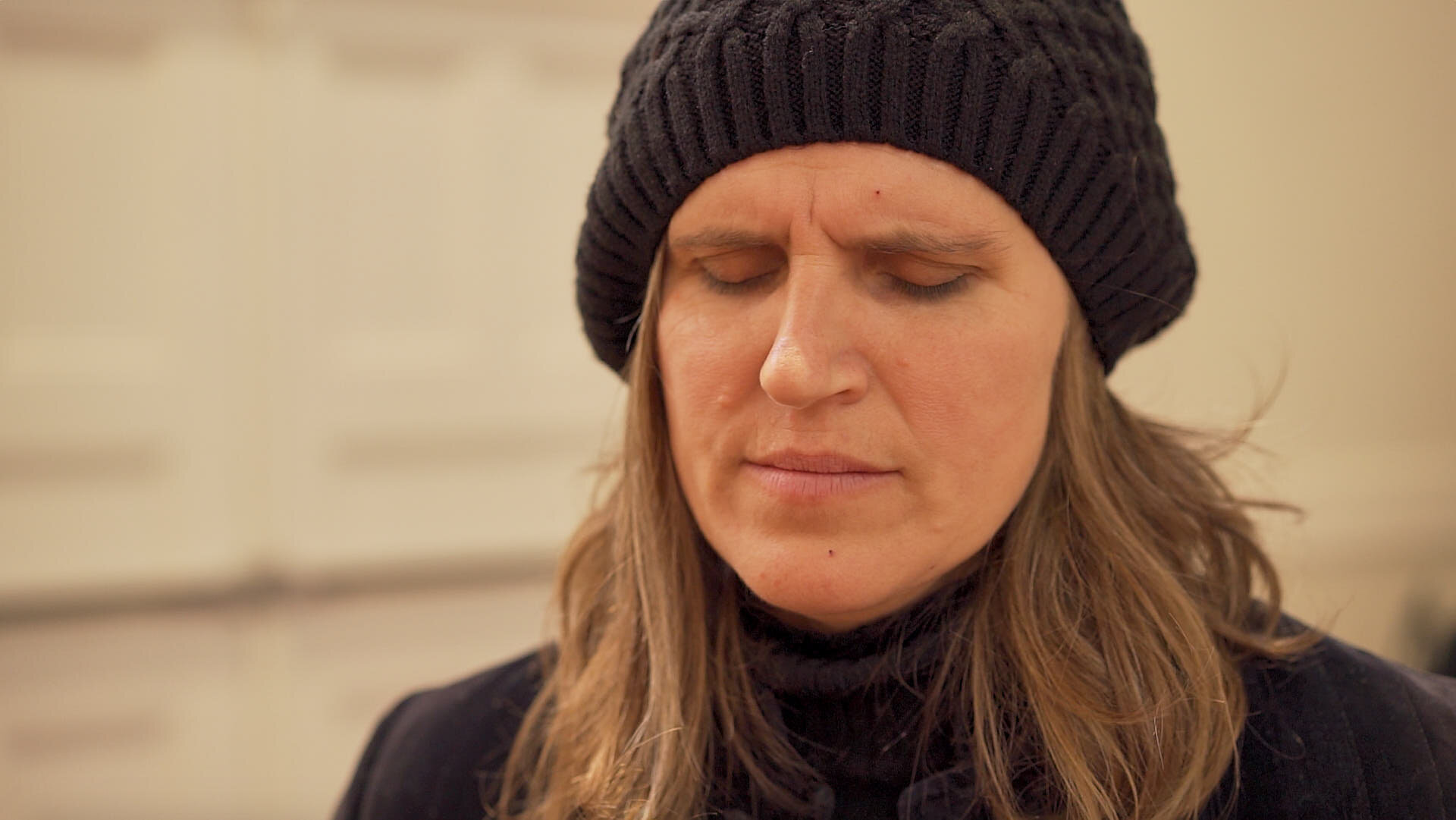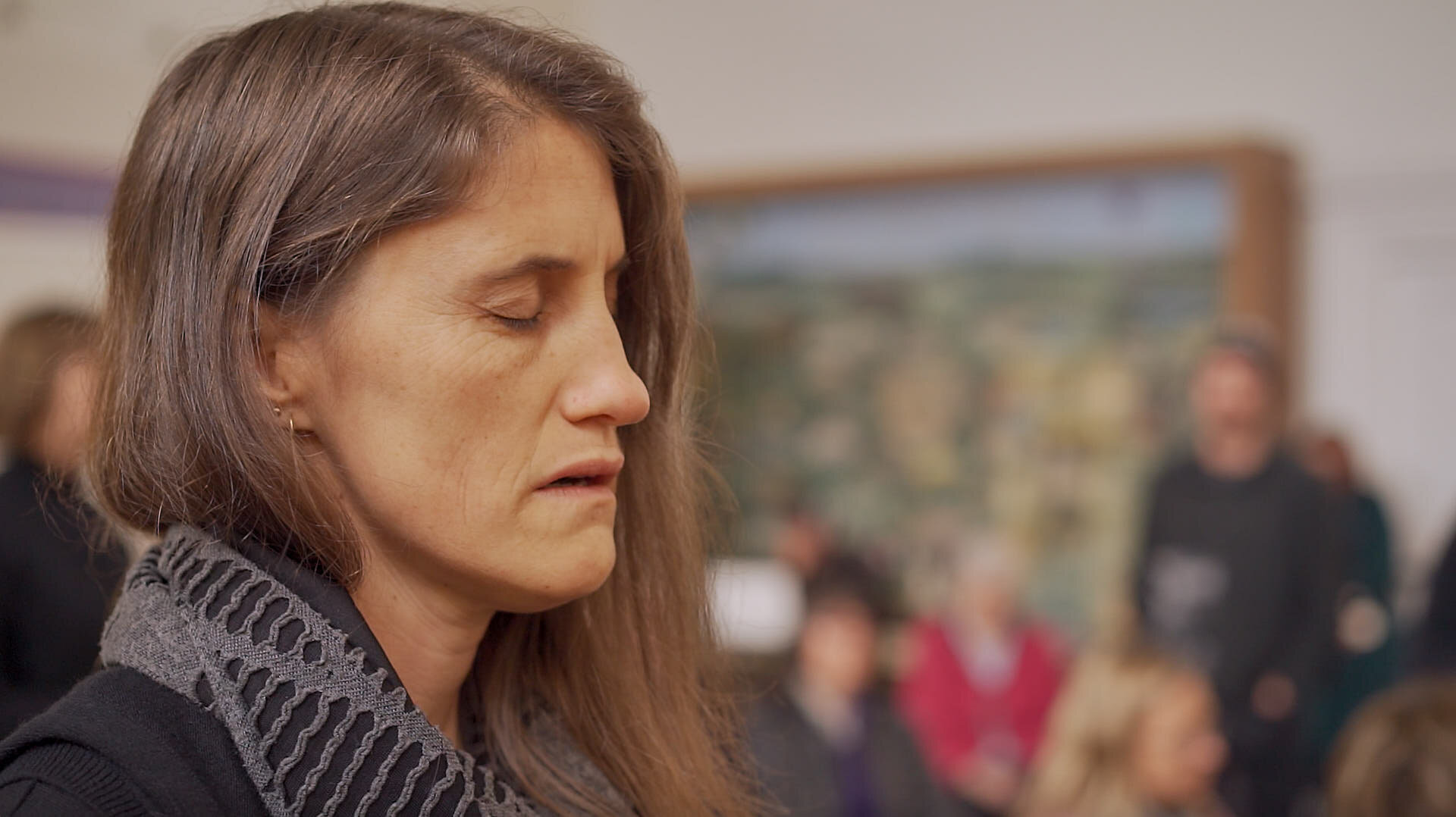A CIVIC SPACE
A CIVIC SPACE
JULIAN DAY
BAROSSA REGIONAL GALLERY
14 JULY 2019
PERFORMED BY MEMBERS OF THE BAROSSA MUSICAL COMMUNITY
‘Chaos or disorder is simply the failure to find the order one expects’[1]
[time and space]
Human sociality is the immaterial stuff of human life, a continuous flow of interactions and connections between us. Multiple, changeable, reciprocal it is the call and response of connection that exists at every level of human coexistence.
These moments of human sociality are the invisible stuff that constructs the larger frames of peoples, communities and belongings. These innumerable actions cohere into stories and ideas of sociality that we can name - People, Community, whatever the name of our chosen tribe and allow us to believe in their stability.
For there is this central tension in human society- between the need to create social identities that are stable, persistent reliable and the fluid, transformative process that is human sociality.
Society is large, sociality is small. Big and little, thing and process, a push and pull between the two forces. It is this slippery plurality; this constant making of the social that evades our notice yet is the stuff of human connection and meaning.
[place]
Buildings provide this reassuring narrative stability as they take the invisible stuff of human sociality and make it solid. Architecture creates social narratives as objects, immaterial but things.
More or less complex, more or less complete or truthful, more or less readable depending on your own social histories and affiliations, buildings materialise specific social relations, imaginaries, narratives and aspirations. They necessarily seek to resolve the messy multiplicities of human sociality neatly into spaces and solids.
This building where A Civic Space has been developed and will be performed is one of those quietly unlovely civic halls of the early 20th century. It exudes a modest but steadfast civic ambition and speaks of very clear social structures. Its narratives are definitely proper nouns, reliable and defined- People, Place, Community.
Inside, its spaces clearly speak these relations. A utilitarian balcony directs its focus to the proscenium arch stage that gazes back to a boxlike hall designed for ranked seating. The pipe organ at its centre monumental.
This space of determined orderliness that doesn’t seem to admit of flux or change yet is a space for sociality expresses this exact tension between thing and process, stability and flux.
[time and body]
For all that these narratives of the social that architecture embodies and tries to stabilise, appearances are deceptive. Their very stuff – every innumerable action of sociality is continuously changing as each moves from present action to the past to be supervened by the future. Each moment as action pulls the next onwards, ceaselessly changing, always in flux.
These actions of sociality are produced in time as duration. This is time not as clock time but as the time of the event, the action, the time of each thing- the time taken to sing or sound a note, the time a breath can be sustained for, the length and persistence of a musical note.
This continuous production of connection, of sociality is too founded in the body, in the reciprocity of action, the linkage of each moment to the next, in the production of a sung note in response to another’s action.
Here it is in the bodily knowledge and discipline of musicality, of working together to produce music, these actions of embodied knowledge and being produce these endless acts of social connection. Duration +embodiment +music become social structures and acts of connection.
These multiplicitous productions that are continually emerging- are that which philosopher Elizabeth Grosz terms ‘becoming’ and describes as ‘the indeterminate, the unfolding and the continual eruption of the new’.[2]
[space]
It is in these spaces where opposing forces are brought into coexistence that things begin to shift. This performance set up is altogether looser suggesting already a different way of operating in this carefully coded space
Vintage metal chairs stand dispersed singly, in pairs and trios in no particular formation with paths and spaces between. The dozen or so performers stand in these interstitial spaces between focused and quiet. Brass players-with cornets, euphoniums, tubas, trumpets et al- are scattered casually in the balcony above gazing down.
We find places, seated standing, near or in between performers. This reconfiguration of the frame of performer and audience, undoes predictability ,we don’t know what to expect and possibility opens up.
There is in this quiet anticipatory time, an unexpected spaciousness where intimations of connection, where likenesses and consonances in the space emerge.
That there are constellations of things material and immaterial here– that echo and connect, bind and establish invisible connections.
The breath of the choristers that becomes sound, the breath of the musicians that flattens and changes into other sounds, the organ at the centre that is itself a machine for capturing and transforming air into sound, the stealthy cold drafts of the hall itself.
This is a breathing space and a space of breath.
[breathe]
It begins with the organ then individually sung notes, long against the organs undertones. Sung notes that sometimes meet and harmonise, sometimes stand alone. There is space and time between the notes stretching or they come quickly on the heels of each other. It’s not possible to anticipate the next. Notes criss cross the space, one to another.
The sound of the organ continues, it ebbs and builds a layered, almost sedimentary sound. The length and persistence of the organ notes created by the careful placement of swaddled weights on the keys and as I discover later the organ notes are ‘throated’ down to create this distinctive sound.
A denser sound now as the organs breath builds and voices swoop and veer in and out. There are intimations of melody that don’t eventuate, a trace of a longer line. The organ base sound is carefully dismantled note by note with the removal of weights and rebuilt as bigger bass notes, pulse and throb and sweeten as voices intercede, add and leave.
An immaterial structure is being built across this space composed of breath and sound from person to person. It is made of reciprocity, the response of each sound to the next and to the next, pulling the performance onwards and weaving a web of connection through these moments.
A voice ululates against the thrum. The organs sound sometimes resembles the illusion of the edge of human speech that high wind produces. Low brass notes arrive seemingly at random and fall from the balcony into the space below.
The balcony brass spikes in with higher sweet notes, bright and with a whiff of menace. It seems to preface a cacophony that doesn’t arrive. Every note stands alone and has to be held in mind before the next arrives. It is a construction of time, action and memory as much on the audiences’ part as the performers. It is being made by us all now, in time and in action.
Voices, brass, organ build, meld, differentiate and change shape. There is a fluid mobility here in this musical architecture. If it were a heat map, every individual utterance would light up bright against the sediment of the organ sound.
There are vocalisations now not notes- oooh aaaah, oh ah, short and long, snatches of brass as the organ builds and ebbs, an almost drone like continuo. A ch ch ch, a brass intervention, a who who who, a bird like shoo wook wook schew. Each sounds like an endnote or a rehearsal warm up, not quite cohering before they move apart.
It gets bigger, lower, fatter brass bottoming out. The organ fades. Voices come in, leave. The organ ends note by note, disassembled, fades and persists.
[a social space]
The immateriality of music and particularly the unpredictability of improvisation opens it up to the ebb and flow of collaboration, of mutuality and openness that is the productive processes and moments of sociality. That what is being negotiated and created at each moment is twinned, music and sociality.
The principles that bound but don’t determine this performance- to ‘sing something they heard, something that clashed, something that harmonised’ [3]almost perfectly express the philosophical idea of becoming, that it is ‘direction without destination, movement with prediction’[4].
The bodily productions of breath-sound- and the productions of being- reciprocity, response, connection- produce sociality as music, here they are the same thing, not just entwined but the same thing produced by social bodies in time as duration.
Like Angelica Mesiti’s work that examines the actions and transfigurations of sociality particularly by putting social actions and constructs out of context, this work opens up the process and emergent nature of sociality through this improvisational musical mode.
For here, what is both created and seen in the process of its making is the micro biome (as it were) of sociality. What is produced is an ephemeral mode of being that nonetheless persists past its time in that it opens up possibility of transformation.
Deleuze writes that the purpose of philosophy is not to decide what things are but to create tools to think with. Similarly artist Simryn Gill has said that art objects are things to think through- art then is not thing to be consumed but is process, is a means and tool of sense making, as is our making and expression of these modes of connection.
This embedded and embodied sociality brings us back from the larger, monolithic ideas of Society, Identity, Culture, and Community into the immediate creative process of sociality.
These actions of response and reciprocity that emerge moment by moment make clear that life is in the small, in the processes and negotiations, in the improvisations and possibilities that are invisible and immaterial but real.
Jemima Kemp
[1] Elizabeth Grosz, Deleuze, Theory and Space. Log Journal, No. 1 2003.
[2] Elizabeth Grosz, Becomings: Explorations in Time, Memory and Futures 1999, p28
[3] Julian Day, artist in conversation
[4] Becomings p28







